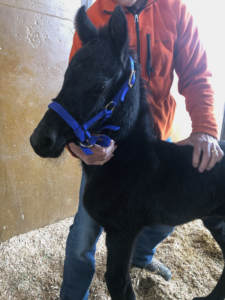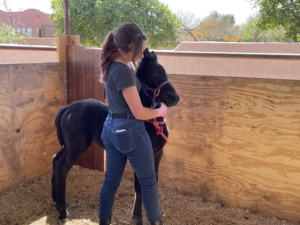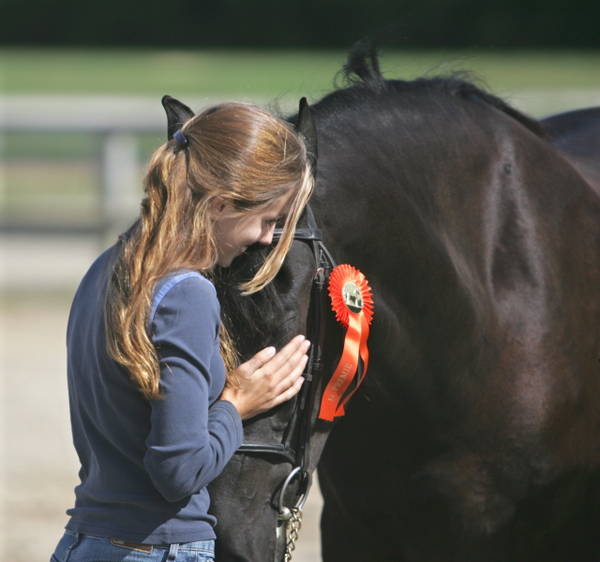Our little lady, Renfri, just turned 1 month old! Time is flying by with this little youngster and as we progress with her handling and training, I wanted to share some foal halter training tips. In our barn, halter training starts very early with the introduction on day one. There are multiple reasons for this, 1) smaller foals are easier to handle and teach, and 2) the sooner you introduce this tool the less scary it will be. As your foal grows, solid halter training is going to become absolutely critical when you introduce other elements like leading politely, standing, tying, and lifting feet.
Introduce Early
You want to make sure the first introduction is calm and beneficial. Trying to wrangle it onto your foal’s head is going to scare them and quite possibly hurt you. As I mentioned, we start with introduction and training on day one. On the first day, we do not, I repeat, do not try to put the halter on. We show them the halter, we rub the halter all over their body, let them calm down, and take it away.
You’ll want to continue this process every day for a few days before attempting to put the halter on. Lessons with foals should be short (roughly 10-15 minutes a day), uncomplicated, and calm. You can tie in these lessons with your normal everyday routine, like taking mom and baby out to pasture or during feeding time for mom.
Putting the Halter On
When you are ready to put the halter on, we highly recommend two people. This is not to gang up on your foal, just to give you another set of hands. Rub the halter all over their body as you have done for several days and move up the neck. Gently and slowly place the halter on your foal. If you have a second person, they can hold the foal while you do this. Allow your foal to wear the halter for a few minutes as you rub them down before removing it. Remove it the same way you put it on, slowly and gently. Avoid sudden movements that might scare your foal and cause a negative association.

Day 2 – First time with the halter on!
You’ll want to continue putting the halter on and taking it off. It generally takes a little while for foals to learn and trust this process. Take your time and stay patient.
Don’t Pull
As you begin teaching your foal to lead, avoid the urge to pull. If you apply too much pressure, too quickly, your foal is likely to go backwards fast or flip over. You want to guide the foal at first. This is a perfect time to add leading into your daily turnout routine. Have one person leading mom, and the other person guiding the foal with their body and arms. Adding a butt-rope can also help guide them.

You can see her starting to put the butt-rope on here. Again, go slowly!
Keep close to mom and let your foal following along as you guide them. As your foal gets older and gains confidence, you can remove the butt rope and beginning leading like a “normal horse”.

I’ve been around horses my entire life, but my Friesian journey started just over 20 years ago. Our horses have always been a part of our family. They have traveled with us as we relocated from Vermont to New York to Iowa and finally, to Arizona. I can’t wait to share our story with you!
Related
Apr 15, 2021
Setting Your Foal Up for Success with Our Top Halter Training Tips

Leave a Reply Cancel reply
@starlitridgefriesiansandfells
LET'S BE FRIENDS ON INSTAGRAM
[…] you stop to consider all of the things you are now responsible for teaching your new foal. Between halter training, standing, loading, introducing new objects, and general ground manners, it can feel like a […]
[…] we’ve covered some different foal training tips and ways to introduce new things. While these specific techniques can help your foal progress quickly in training, there are a few high-level things you’ll want to […]